 The 25th episode of Rod Serling’s The Twilight Zone airs on CBS. Roddy McDowall (Planet Of The Apes) and Susan Oliver (Star Trek) star in Serling’s adaptation of a Paul Fairman short story.
The 25th episode of Rod Serling’s The Twilight Zone airs on CBS. Roddy McDowall (Planet Of The Apes) and Susan Oliver (Star Trek) star in Serling’s adaptation of a Paul Fairman short story.
This series is not fully chronicled in the LogBook. You could join theLogBook team and write this guide or support the webmaster’s efforts to expand the site.
More about The Twilight Zone in the LogBook and theLogBook.com Store

 The 29th and final episode of the spy-fi series Adam Adamant Lives! airs on BBC1, starring Gerald Harper and Juliet Harmer. T.P. McKenna guest stars in the series finale, one of the only two second season episodes that now exists in the BBC’s archives.
The 29th and final episode of the spy-fi series Adam Adamant Lives! airs on BBC1, starring Gerald Harper and Juliet Harmer. T.P. McKenna guest stars in the series finale, one of the only two second season episodes that now exists in the BBC’s archives. The
The 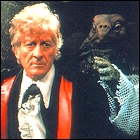 The
The  The
The 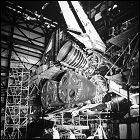 Construction begins on Space Shuttle Orbiter Vehicle 102 (OV-102 for short), the shuttle orbiter that NASA intends to launch as early as
Construction begins on Space Shuttle Orbiter Vehicle 102 (OV-102 for short), the shuttle orbiter that NASA intends to launch as early as 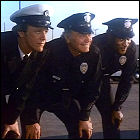 ABC airs both parts of a
ABC airs both parts of a  The 56th episode of The Bionic Woman, starring Lindsay Wagner and Richard Anderson, airs on NBC. Carmen Argenziano (Stargate SG-1) guest stars.
The 56th episode of The Bionic Woman, starring Lindsay Wagner and Richard Anderson, airs on NBC. Carmen Argenziano (Stargate SG-1) guest stars. ABC airs the second episode of Stephen J. Cannell’s superhero comedy series The Greatest American Hero, starring William Katt, Connie Sellecca, and Robert Culp.
ABC airs the second episode of Stephen J. Cannell’s superhero comedy series The Greatest American Hero, starring William Katt, Connie Sellecca, and Robert Culp.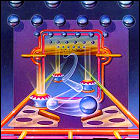 Atari releases
Atari releases 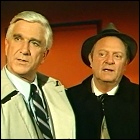 ABC airs the
ABC airs the  The 20th episode of the science fiction series The Powers Of Matthew Star airs on NBC, starring Peter Barton and Louis Gossett Jr. Jon Gries (Martin, The Pretender) guest stars.
The 20th episode of the science fiction series The Powers Of Matthew Star airs on NBC, starring Peter Barton and Louis Gossett Jr. Jon Gries (Martin, The Pretender) guest stars. Geffen Records releases
Geffen Records releases 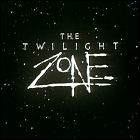 The 62nd episode of a revival of Rod Serling’s The Twilight Zone airs in syndication. Ben Murphy (Alias Smith And Jones, Gemini Man) stars.
The 62nd episode of a revival of Rod Serling’s The Twilight Zone airs in syndication. Ben Murphy (Alias Smith And Jones, Gemini Man) stars. The week-long national syndication window opens for
The week-long national syndication window opens for  The fourth episode of George Lucas’ historical adventure series The Young Indiana Jones Chronicles airs on ABC, starring Sean Patrick Flanery. Bernard Fresson and Jean Rougerie guest star.
The fourth episode of George Lucas’ historical adventure series The Young Indiana Jones Chronicles airs on ABC, starring Sean Patrick Flanery. Bernard Fresson and Jean Rougerie guest star. GNP Crescendo records releases
GNP Crescendo records releases  Cable channel TNT premieres
Cable channel TNT premieres 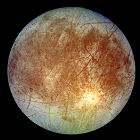 NASA scientists announce a startling find on one of Jupiter’s moons: a chemical which must be manufactured on Earth occurs naturally on the surface of Europa. The Galileo orbiter detects naturally-occurring hydrogren peroxide on the surface of the icy moon (a surface which most planetary scientists now believe covers an ocean of water or “slush” just beneath the crust), probably caused by the constant bombardment of radiation-charged particles from Jupiter itself. The hydrogen peroxide on Europa is also found to be very short-lived, quickly breaking down into gaseous oxygen and hydrogen.
NASA scientists announce a startling find on one of Jupiter’s moons: a chemical which must be manufactured on Earth occurs naturally on the surface of Europa. The Galileo orbiter detects naturally-occurring hydrogren peroxide on the surface of the icy moon (a surface which most planetary scientists now believe covers an ocean of water or “slush” just beneath the crust), probably caused by the constant bombardment of radiation-charged particles from Jupiter itself. The hydrogen peroxide on Europa is also found to be very short-lived, quickly breaking down into gaseous oxygen and hydrogen.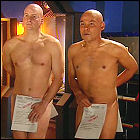 The
The  The 139th episode of Joss Whedon’s supernatural series Buffy The Vampire Slayer, starring Sarah Michelle Gellar, airs on UPN. James Marsters and Alyson Hannigan also star. Juliet Landau guest stars.
The 139th episode of Joss Whedon’s supernatural series Buffy The Vampire Slayer, starring Sarah Michelle Gellar, airs on UPN. James Marsters and Alyson Hannigan also star. Juliet Landau guest stars.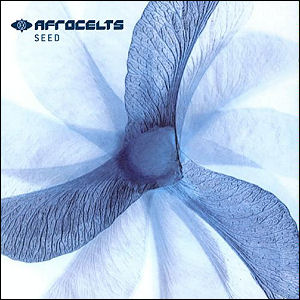 The fourth
The fourth  The
The 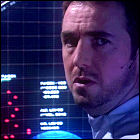 Sci-Fi Channel airs
Sci-Fi Channel airs 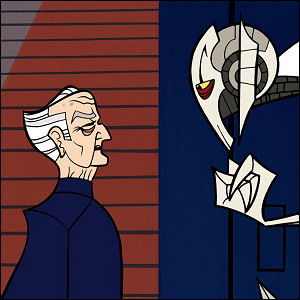 Bridging the gap between Star Wars Episode II and Episode III, Cartoon Network airs the
Bridging the gap between Star Wars Episode II and Episode III, Cartoon Network airs the  Sci-Fi channel airs the
Sci-Fi channel airs the 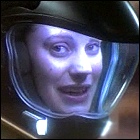 Sci-Fi Channel airs the
Sci-Fi Channel airs the 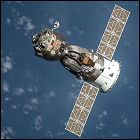 Part of the 39th full-time crew of the International Space Station lifts off from Russia’s Baikonur Cosmodrome aboard Soyuz TMA-12M. Aleksandr Skvortsov, Oleg Artemyev and Steven Swanson take up residence on the ISS for 169 days, becoming part of the Expedition 39 and 40 crews. This crew returns to Earth in September 2014 aboard the same vehicle.
Part of the 39th full-time crew of the International Space Station lifts off from Russia’s Baikonur Cosmodrome aboard Soyuz TMA-12M. Aleksandr Skvortsov, Oleg Artemyev and Steven Swanson take up residence on the ISS for 169 days, becoming part of the Expedition 39 and 40 crews. This crew returns to Earth in September 2014 aboard the same vehicle. The 63rd episode of Arrow, a modern-day reboot of DC Comics’ Green Arrow superhero starring Stephen Amell, airs on the CW. Brandon Routh (Superman Returns) guest stars.
The 63rd episode of Arrow, a modern-day reboot of DC Comics’ Green Arrow superhero starring Stephen Amell, airs on the CW. Brandon Routh (Superman Returns) guest stars. Cable channel Disney XD airs the
Cable channel Disney XD airs the